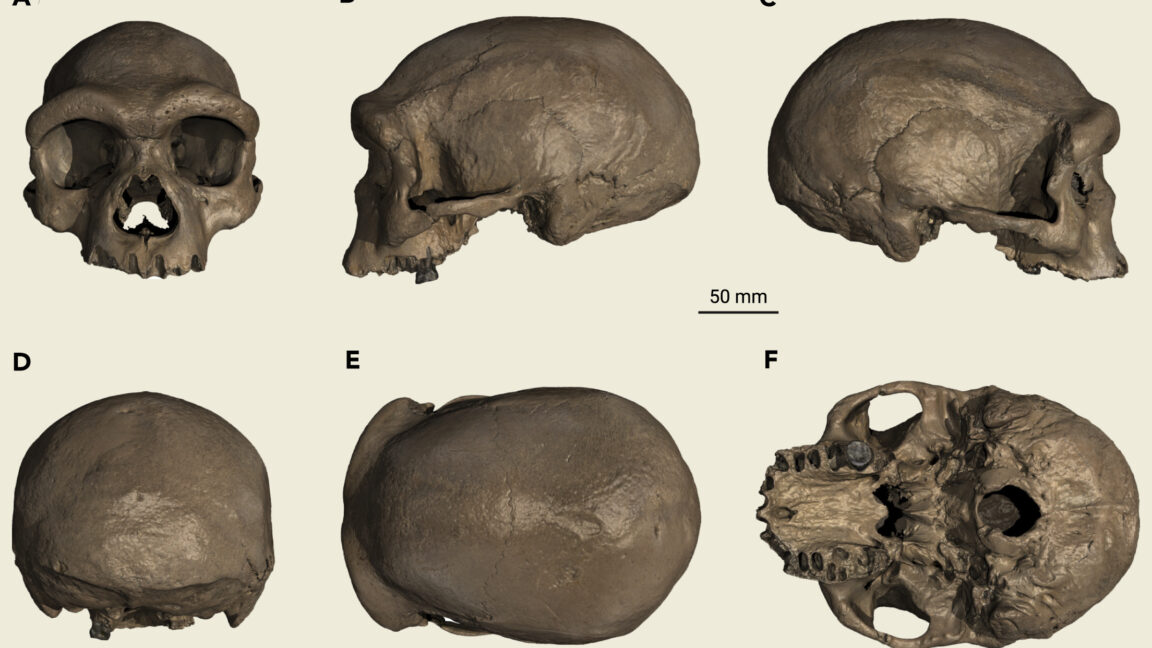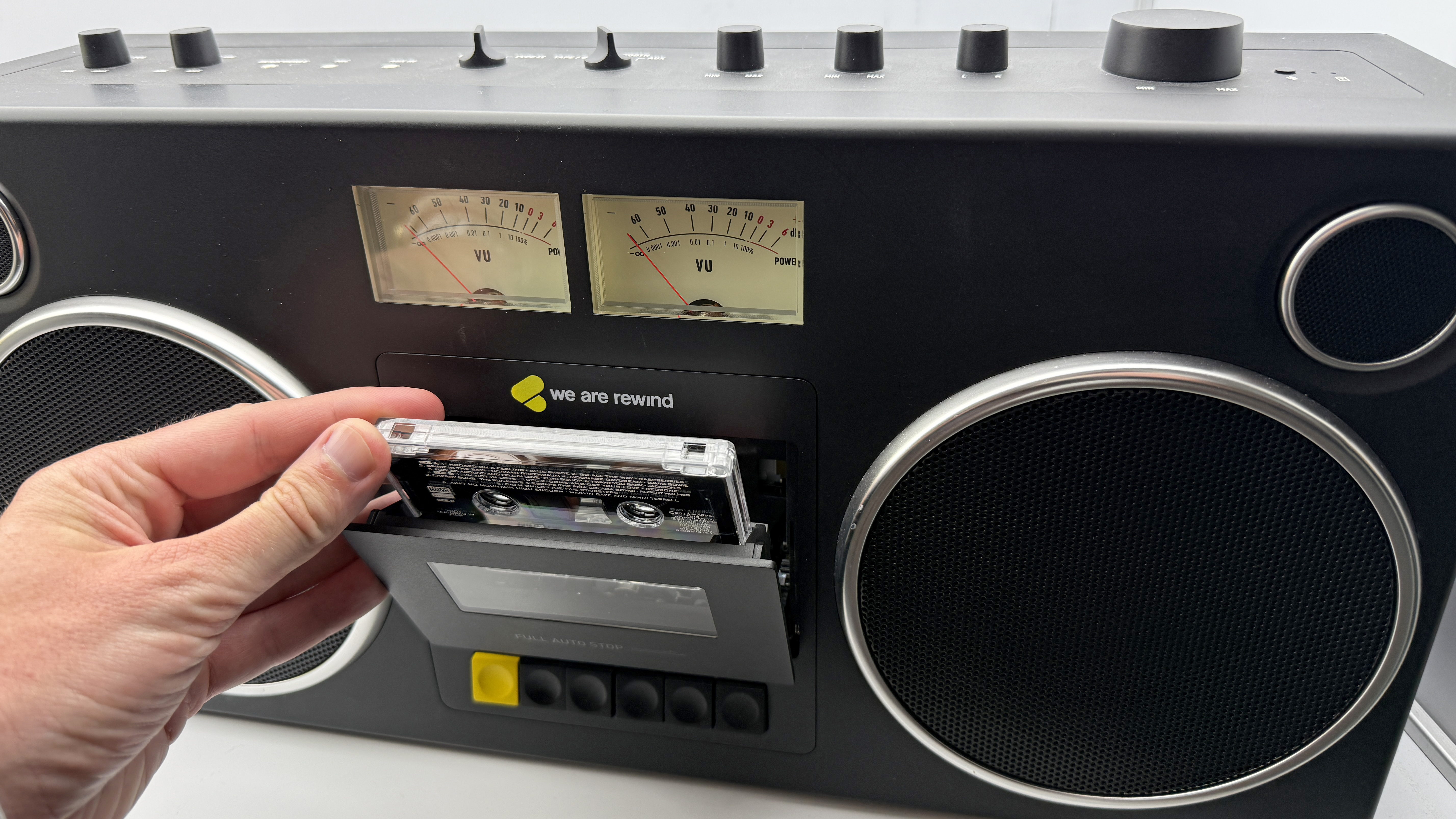This former motel in Oregon could be the solution to the student housing crisis
Media portrayals of college life often show the dorm as a melting pot, where students from a diversity of backgrounds get thrown together to learn about life beyond the classroom. But the reality is that just one in five coeds in the U.S. today actually live on campus in such a setup. Many live off campus, a majority face significant affordability challenges, and stable student housing is far from a given—an ongoing crisis that threatens the achievement of higher education. An experiment in housing affordability, which turned a dilapidated motel into a new home for students, is a case study in building cheaper, more affordable student housing, and ideally an example of how to create a more equitable college experience. Recently opened in a suburb of Portland, Oregon, Abigail Court offers a new model for serving the significant population of college students in dire need of affordable housing. What was once a falling-apart motel has been remade into a series of 70 studio apartments with an airy common room and a brick-lined courtyard. It houses students from Mt. Hood Community College, Portland State University, and Portland Community College. It’s the work of College Housing Northwest (CHNW), a Portland nonprofit focused on designing and building affordable, accessible spaces for students. For this 55-year-old nonprofit, Abigail Court became a new model for funding and creating a space that’s better suited for students to study. [Photo: courtesy CHNW] As the nation’s college population began an upswing starting in the 1960s and ’70s, due in large part to expanding access to more Americans from different economic backgrounds, the cost of college—and especially housing near school—began increasing as well. Room and board, the fastest-growing expense for students, can often be more than tuition, said Jim Rader, CHNW’s executive director. There was an expectation when the organization started in the ’60s that any college student had family support and didn’t need to worry about housing costs. A 2025 report from Temple University’s Hope Center, which studies challenges in college life, found that 48% of U.S. college students are experiencing housing insecurity today, with 14% having experienced homelessness. Student housing is also one part of the affordable housing puzzle that often doesn’t get addressed, and it’s a crucial one, since enabling students to make it through to graduation helps them better their earning potential and access better housing later in life. According to Sara Goldrick-Rab, a sociologist and academic who studies college affordability, existing research clearly shows that housing access and affordability greatly improve educational outcomes for students. A multiyear study Goldrick-Rab ran in Tacoma, Washington, found that federal housing assistance for students not only increased their graduation rates but also improved their overall physical health; they had fewer emergency room visits, lower rates of food insecurity, and fewer interactions with police or law enforcement. “It’s a huge deal,” Goldrick-Rab said. “About 50% of college students are struggling with rent.” [Photo: courtesy CHNW] Today, the nation’s colleges and universities—including community colleges, which often draw more working-class and low-income students—have begun to build out more dorms and housing meant to help close the gap, but institutions don’t have the means to meet the scale of the challenge. Goldrick-Rab believes many institutions starting to build out housing simply aren’t experienced as developers or landlords. In addition, two of the nation’s more prominent affordable housing programs—LIHTC, or the Low Income Housing Tax Credit, which finances new housing construction, and Section 8, a voucher program to help assist with rental payments—don’t apply to college students. Along with a booming for-profit student housing industry (the surging sector of commercial real estate saw $8.5 billion in transactions last year alone), this lack of public funding has created a college housing market much like the larger rental market in the U.S.: lots of high-priced, market-rate options, a handful of highly subsidized units for those most in need, and a widening gap for those with low to middle-range incomes. CHNW was able to afford to do the Abigail Court project via an Oregon state program called Project Turnkey, which launched in 2020 to help create housing for Oregonians displaced by wildfires. Alex Wallace, a real estate manager at CHNW, heard about the program and decided to see if it might be applicable to college students. CHNW proposed to use funds to turn the Ponderosa Inn of Gresham, Oregon, into a new kind of student residence, and was awarded about $6 million from Project Turnkey to acquire the property. [Photo: courtesy CHNW] The nonprofit spent another $8 million to adaptively redevelop the lodging into modern student housing, which added up to about $112,00
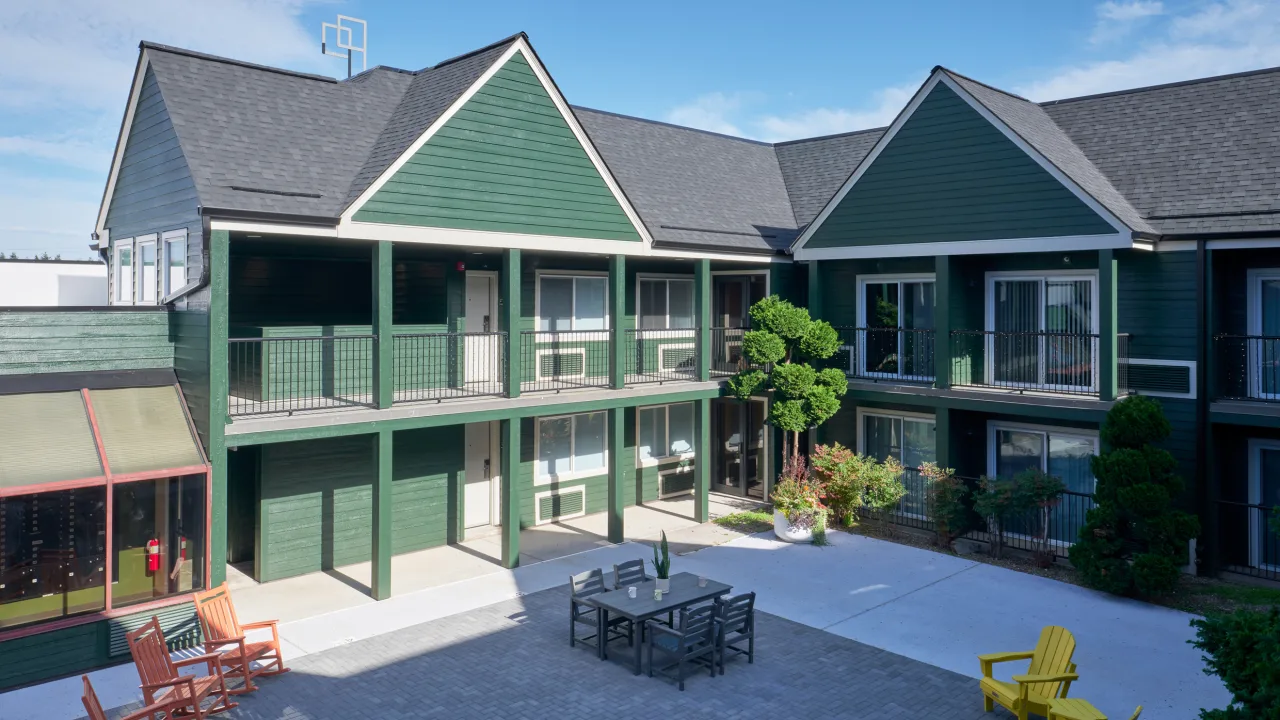
Media portrayals of college life often show the dorm as a melting pot, where students from a diversity of backgrounds get thrown together to learn about life beyond the classroom. But the reality is that just one in five coeds in the U.S. today actually live on campus in such a setup. Many live off campus, a majority face significant affordability challenges, and stable student housing is far from a given—an ongoing crisis that threatens the achievement of higher education.
An experiment in housing affordability, which turned a dilapidated motel into a new home for students, is a case study in building cheaper, more affordable student housing, and ideally an example of how to create a more equitable college experience.
Recently opened in a suburb of Portland, Oregon, Abigail Court offers a new model for serving the significant population of college students in dire need of affordable housing. What was once a falling-apart motel has been remade into a series of 70 studio apartments with an airy common room and a brick-lined courtyard. It houses students from Mt. Hood Community College, Portland State University, and Portland Community College.
It’s the work of College Housing Northwest (CHNW), a Portland nonprofit focused on designing and building affordable, accessible spaces for students. For this 55-year-old nonprofit, Abigail Court became a new model for funding and creating a space that’s better suited for students to study.
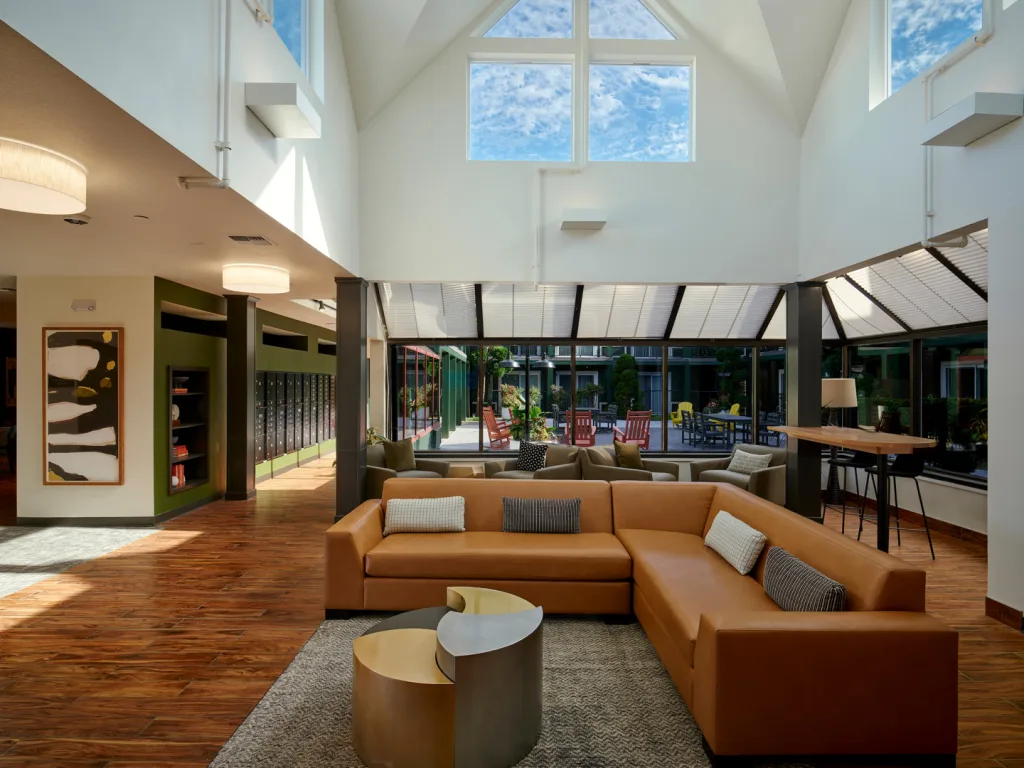
As the nation’s college population began an upswing starting in the 1960s and ’70s, due in large part to expanding access to more Americans from different economic backgrounds, the cost of college—and especially housing near school—began increasing as well. Room and board, the fastest-growing expense for students, can often be more than tuition, said Jim Rader, CHNW’s executive director. There was an expectation when the organization started in the ’60s that any college student had family support and didn’t need to worry about housing costs. A 2025 report from Temple University’s Hope Center, which studies challenges in college life, found that 48% of U.S. college students are experiencing housing insecurity today, with 14% having experienced homelessness.
Student housing is also one part of the affordable housing puzzle that often doesn’t get addressed, and it’s a crucial one, since enabling students to make it through to graduation helps them better their earning potential and access better housing later in life.
According to Sara Goldrick-Rab, a sociologist and academic who studies college affordability, existing research clearly shows that housing access and affordability greatly improve educational outcomes for students. A multiyear study Goldrick-Rab ran in Tacoma, Washington, found that federal housing assistance for students not only increased their graduation rates but also improved their overall physical health; they had fewer emergency room visits, lower rates of food insecurity, and fewer interactions with police or law enforcement.
“It’s a huge deal,” Goldrick-Rab said. “About 50% of college students are struggling with rent.”
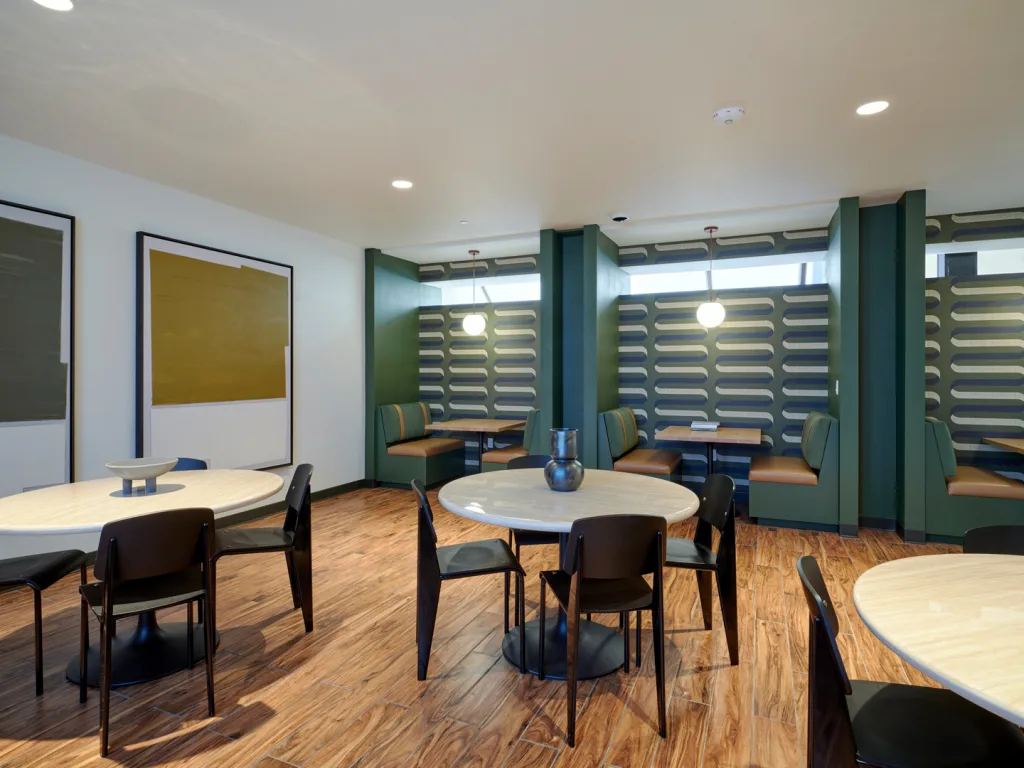
Today, the nation’s colleges and universities—including community colleges, which often draw more working-class and low-income students—have begun to build out more dorms and housing meant to help close the gap, but institutions don’t have the means to meet the scale of the challenge. Goldrick-Rab believes many institutions starting to build out housing simply aren’t experienced as developers or landlords.
In addition, two of the nation’s more prominent affordable housing programs—LIHTC, or the Low Income Housing Tax Credit, which finances new housing construction, and Section 8, a voucher program to help assist with rental payments—don’t apply to college students. Along with a booming for-profit student housing industry (the surging sector of commercial real estate saw $8.5 billion in transactions last year alone), this lack of public funding has created a college housing market much like the larger rental market in the U.S.: lots of high-priced, market-rate options, a handful of highly subsidized units for those most in need, and a widening gap for those with low to middle-range incomes.
CHNW was able to afford to do the Abigail Court project via an Oregon state program called Project Turnkey, which launched in 2020 to help create housing for Oregonians displaced by wildfires. Alex Wallace, a real estate manager at CHNW, heard about the program and decided to see if it might be applicable to college students. CHNW proposed to use funds to turn the Ponderosa Inn of Gresham, Oregon, into a new kind of student residence, and was awarded about $6 million from Project Turnkey to acquire the property.

The nonprofit spent another $8 million to adaptively redevelop the lodging into modern student housing, which added up to about $112,000 per unit, less than half what Wallace estimates it would take to build a brand-new dorm from scratch. The whole build-out, which took 18 months, opened last September with rent for a studio set at $915; it’s now 100% leased, and a state-funded rental assistance program helps 32 students pay functionally zero rent.
In May, CHNW got approval to use state tax credits for affordable student housing, and hopes to use this ability to buy a 100-unit building near Portland State University that it can convert into a similar housing project.
“Hotels and motels of this size are great for small housing,” Rader says. “We go into these areas where there’s a community college, it’s often in need of revitalization, and these renovations can help revitalize the community.”



























































































































